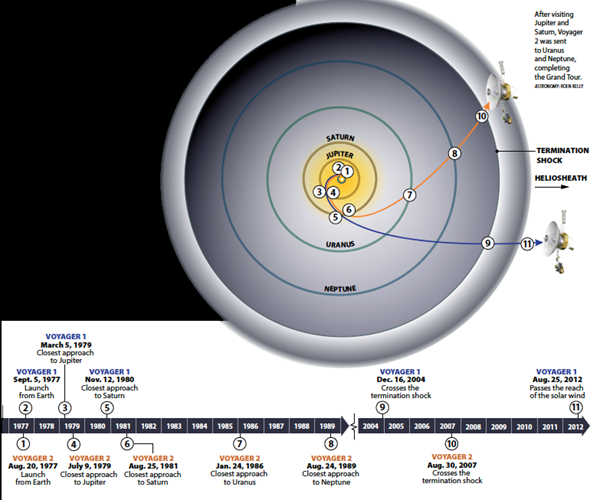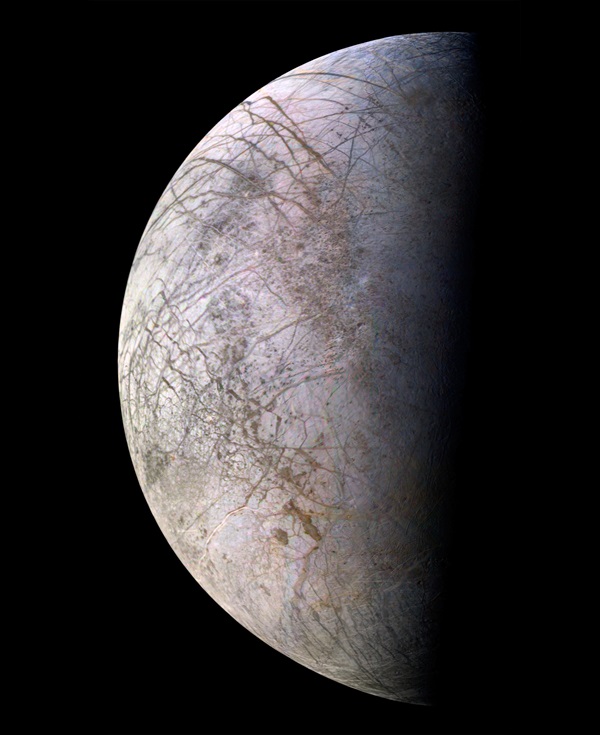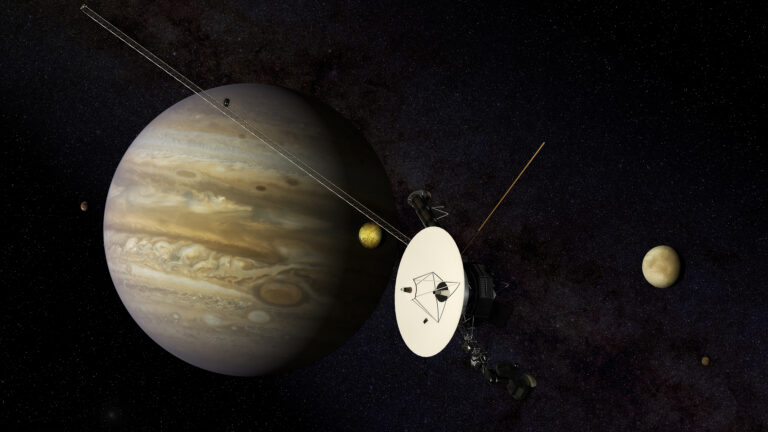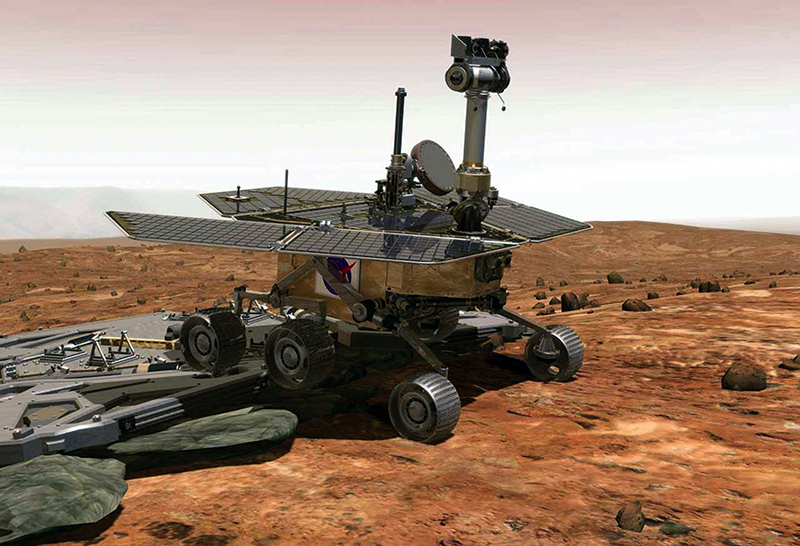Key Takeaways:
At Jupiter, and then Saturn, the mission achieved far more than its original objectives. Then came the big news: By carefully tweaking Voyager 2’s flight path, flybys of Uranus and Neptune were possible.
The two-planet addition became the Grand Tour. The projected lifetimes stretched to 12 years for the Neptune encounter August 24, 1989. And that date would, in turn, become early history. As of 2018, both Voyagers have finished their fourth decade of operation — and they show no signs of stopping.
One surprise after another
The Voyager spacecraft made enough discoveries to fill this magazine — and we did just that for our October 2017 issue — but most scientists would view the following as the top 10.
1) Volcanoes on Jupiter’s moon Io. This was the biggie. While processing a Voyager 1 image, navigation engineer Linda Morabito discovered a feature along Io’s edge. What she initially thought was a moon turned out to be a plume from an active volcano. Planetary geologists subsequently learned Io’s interior is in turmoil: Jupiter’s gravity stretches it differently depending on how far the moon is from the planet. Such an interaction creates intense heating due to friction. The result is that Io has 100 times as much volcanic activity as Earth.
2) Jupiter’s turbulent atmosphere. After watching the giant planet’s cloud bands and Great Red Spot from afar for three centuries, scientists got their first up-close look with Voyager 1. They saw dozens of interacting hurricanes, some as large as planets. And the Red Spot itself displays layers of complex activity. It lies 5 miles (8 kilometers) above the surrounding clouds, and time-lapse movies confirmed its counterclockwise rotation.
4) The Io torus. Voyager 1 found a thick ring of ionized sulfur and oxygen shed by Io that inflates Jupiter’s giant magnetic field. The material originates within the moon’s volcanoes, some of which are so powerful that they erupt it directly into space.
5) Saturn’s ring structure. Before 1980, astronomers recognized fewer than six rings around Saturn. But Voyagers’ cameras showed that each ring had numerous subdivisions. In addition, Voyager 1 discovered that the enigmatic F ring has two small “shepherding” satellites, Pandora and Prometheus, whose gravity keeps the ring in place.
6) Titan’s atmosphere. Voyager 1 showed that Titan has a nitrogen atmosphere with a surface pressure 45 percent greater than on Earth. Voyager data hinted at the possibility (later confirmed) that this satellite experiences clouds of methane and other hydrocarbons, and that rain falling from those clouds creates lakes of liquid methane on the surface.
7) The Great Dark Spot. As Voyager 2 approached Neptune, scientists identified a gigantic dark feature. It was dubbed the Great Dark Spot, and researchers were at a loss to explain how such a storm could form given the small amount of energy Neptune receives from the Sun. Further study showed the Great Dark Spot, and similar features observed since Voyager 2 passed by, are cyclones that exist as holes in the planet’s upper atmosphere.
8) Neptune’s supersonic winds. The discovery of the fastest winds in the solar system in the atmosphere of the most distant planet was a stunner. Voyager 2 measured wind speeds of 1,100 mph (1,600 km/h) above Neptune. Because the planet radiates 2.6 times as much energy as it receives from the Sun, researchers think the decay of radioactive elements deep within Neptune powers the currents.
10) The edge of the solar system. The Voyager spacecraft didn’t stop working after their planetary encounters. In 2014, Voyager 1 passed an important boundary within our solar system called the heliopause. This is where the strength of the solar wind isn’t powerful enough to overcome the stellar winds of nearby stars. Voyager 1 crossed another border, the termination shock, where the solar wind abruptly slows to subsonic speed, back in 2004. Voyager 2 followed in 2007. As each spacecraft crossed the heliopause, their Voyager Interstellar Mission commenced.
A new horizon
As of February 8, 2018, Voyagers 1 and 2 are 13.16 billion miles (21.18 billion km) and 10.91 billion miles (17.56 billion km) from Earth, respectively. And the craft are still making news. In 2011, Voyager 1 crossed into a zone astronomers call the stagnation region. There, at the boundary of interstellar space, the solar wind is less intense, but the magnetic field measures twice as strong.
Voyager 1 is leaving the solar system at about 320 million miles (520 million km) per year. Meanwhile, Voyager 2 is exiting at about 290 million miles (470 million km) per year.
Both spacecraft continue to study ultraviolet sources among the stars and the boundary between the Sun’s influence and interstellar space. Communications will be maintained until the Voyagers’ power sources no longer can run critical subsystems.
The grand tour of the solar system (and beyond) continues. The primary explorers are two workmanlike spacecraft that achieved the goals scientists set before them, far surpassed their planned life spans, and adapted to new expectations by evolving technologically. Indeed, more than 40 years after their launches, Voyager 1 and Voyager 2 continue to go where no one has gone before.












